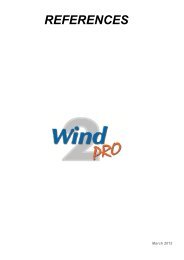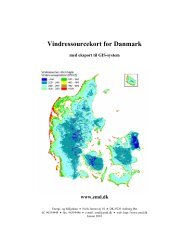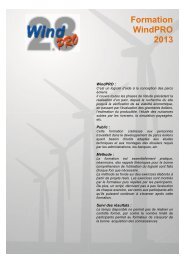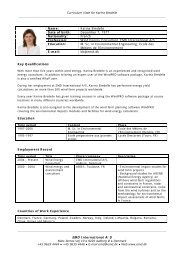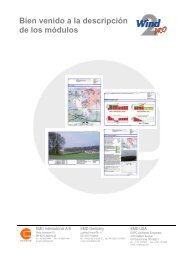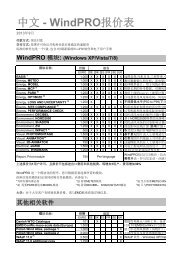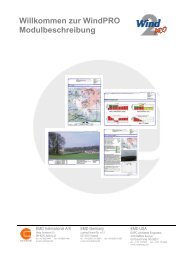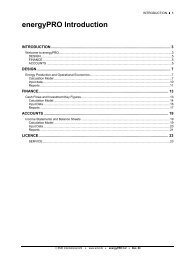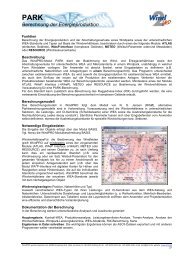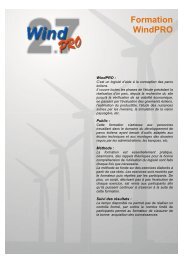WindPRO / PARK - EMD International AS.
WindPRO / PARK - EMD International AS.
WindPRO / PARK - EMD International AS.
You also want an ePaper? Increase the reach of your titles
YUMPU automatically turns print PDFs into web optimized ePapers that Google loves.
1. Introduction to Wake Modelling<br />
The Bernoulli equation gives the relation between pressure and wind speed, as the total pressure is constant<br />
along a streamline (streamline = a line which is drawn, such as it is always tangent to the velocity vector).<br />
Using the Bernoulli equation just before and after the rotor gives us two equations:<br />
Figure 2: Flow near an idealized turbine: velocity and pressure.<br />
p<br />
0<br />
+ ½ρV<br />
2<br />
0<br />
p − ∆p<br />
+ ½ pu<br />
2<br />
= p + ½ pu<br />
= p<br />
0<br />
2<br />
+ ½ pu<br />
2<br />
1<br />
and<br />
(2)<br />
These two equations are then subtracted to yield the drop in pressure over the rotor plane<br />
∆p<br />
= ½ρ(<br />
V 0 − u<br />
2<br />
2<br />
1<br />
)<br />
(3)<br />
Another method for calculating the drop in pressure, ∆p, is expressing the drop as the change in momentum<br />
of the mass of air passing through one square meter of the rotor area per second (actually by considering<br />
the second law of Newton). This yield<br />
∆p<br />
= ρ u( V 0 − u1)<br />
(4)<br />
Now equating the equations (3) and (4) gives an expression for the wind speed in the rotor plane:<br />
u = ½( V 0 + u1)<br />
(5)<br />
i.e. the velocity in the rotor plane is exactly the average of the far upstream and the far downstream wind<br />
speed.<br />
Page 1-2



